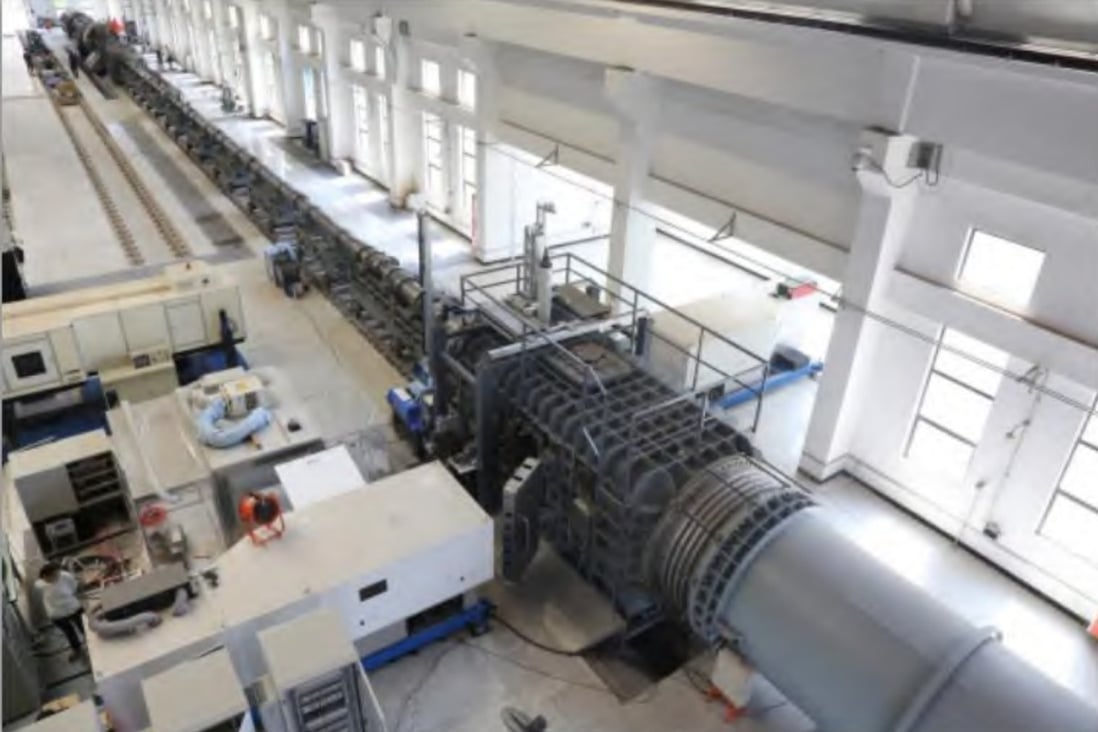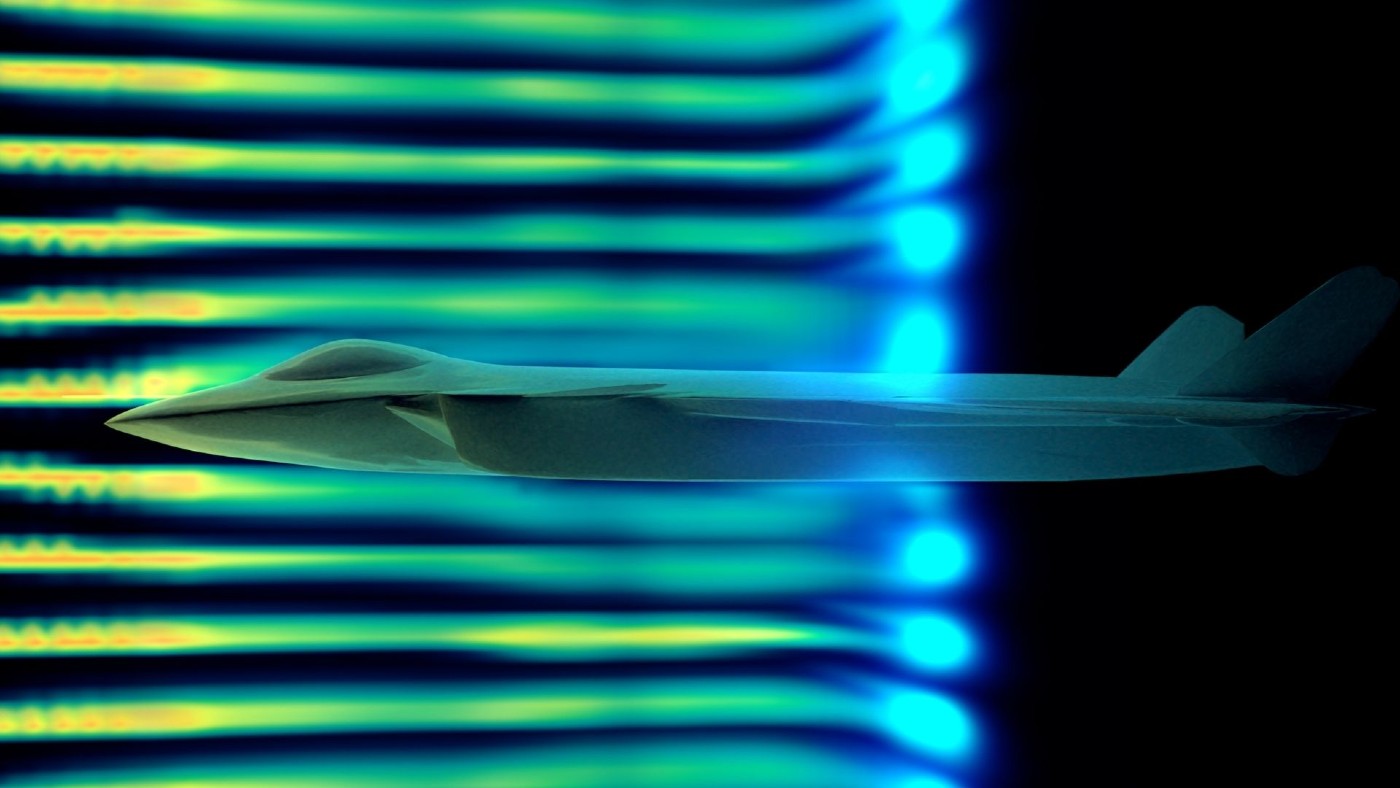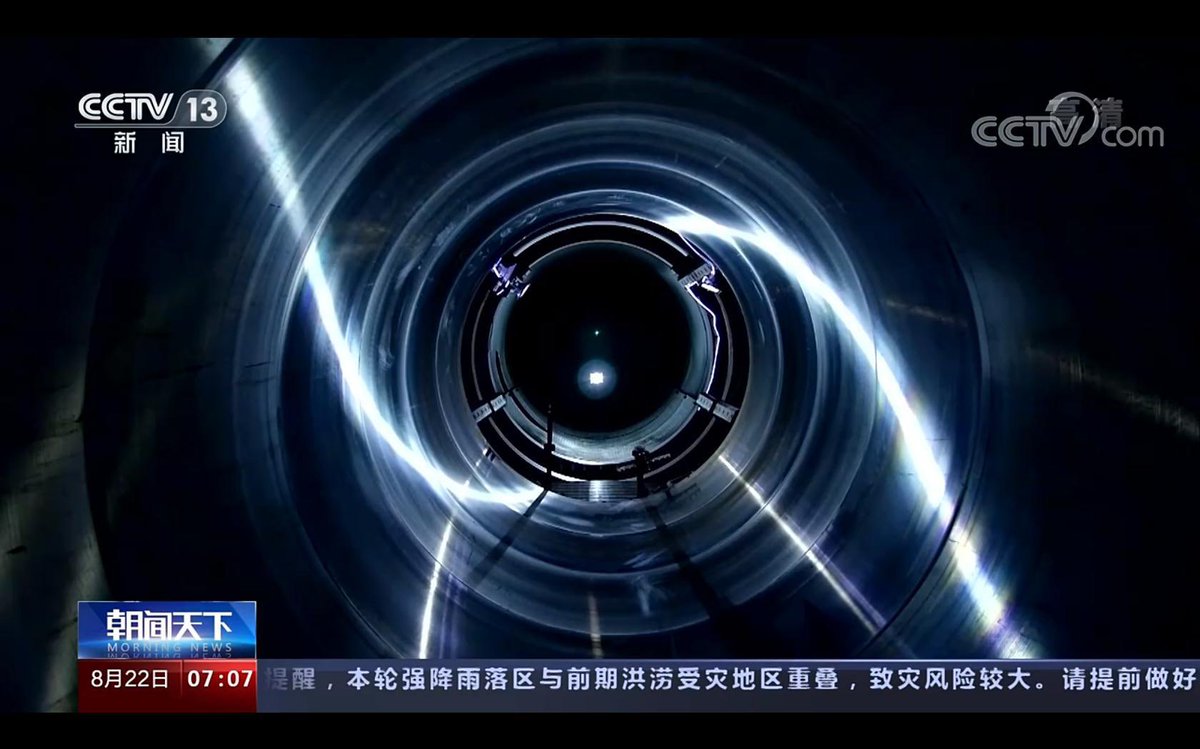China’s ambitions to accelerate hypersonic experiments and test its space technologies have gained fresh momentum with the opening of what it claims to be the world’s largest free-piston-driven shock tunnel in southwest China.
Super Success In Ukraine, China Unveils Its Own Switchblade-Like Kamikaze Drone In Live Fire Drills
Big Discovery On Moon! China Claims Becoming 3rd Country Ever To Discover A New Mineral On The Lunar Surface
The facility is based on a design devised by Australian scientists. It can simulate severe flying circumstances at speeds up to 33 times the speed of sound, or between 1.5 and 11.5 kilometers per second (2.5 to 7.14 miles per second).
The project will enable high-quality, low-cost wind tunnel tests for hypersonic research, the report SCMP said.
Beijing has been advancing hypersonic technology swiftly for both commercial and military applications. According to Chinese researchers, the Sichuan Province’s cutting-edge laboratory is expected to support a diverse range of missions soon.
These missions include the launch of Chinese astronauts to the moon and the development of a hypersonic aircraft that could go anywhere in the world in just one hour.
The report said the testing tube was roughly twice as large as similar facilities in the West, with a diameter of 80cm (2.6 ft).
“(We) have built the world’s largest free-piston driven expansion tube wind tunnel with high enthalpy,” said the project team led by Lyu Zhiguo of the Hypervelocity Aerodynamics Institute under the China Aerodynamics Research and Development Center in Mianyang. Heat intensity in the air is measured by enthalpy.

It can be utilized for high-level national engineering projects like the lunar landing project’s return capsule, the development of interstellar exploration aircraft that can enter alien atmospheres, and the creation of scramjet-powered aircraft that can travel at hypersonic speeds.
In recent decades, a large number of piston-driven wind tunnels have been constructed all over the world. However, the largest expansion tube, with a diameter of around 40 centimeters, was the X3 Expansion Tube at the University of Queensland until recently.
UAE To Buy 120 Turkish Bayraktar TB2 Drones; Some Components Could be Manufactured In The Emirates — Reports
Japan Wants India’s Help To Combat China; To Hold Air Force Drills With IAF’s Su-30 Fighters That PLAAF Also Operates
Free-Piston-Driven Tunnel
A free-piston-driven tunnel is known as a Stalker tube, and Australian space engineer Raymond Stalker designed it in the 1960s.
Large wind tunnels were developed by the Soviet Union and the United States during the Cold War to research flying at hypervelocity, or speeds greater than Mach 5. In these wind tunnels, extreme flight conditions are typically simulated using hot hydrogen gas.

However, since hydrogen is expensive, hard to store, and highly explosive, its development, use, and maintenance are costly and complex. Stalker suggested a new concept that would drive a piston with high-pressure nitrogen, an inexpensive inert gas that accounts for 80% of the atmosphere.
When the heavy piston is propelled to a speed of several hundred kilometers per hour, it can compress the air and pierce multiple layers of strong membranes to produce hot, extremely rapid shock waves. These shock waves are comparable to those that an aircraft experiences when traveling at hypersonic speeds.
Canberra also made progress in this area owing to the piston-driven wind tunnels developed by Stalker and his colleagues in the 1980s. Australia, a minor player in the space race, has created cutting-edge hypersonic flight technologies, such as the scramjet, with little investment and workforce.
The nation also appears to be an emerging player in the hypersonic race. For instance, the Stalker tubes are so effective that the US and Australia inked a contract in 2020 to work together to build a hypersonic glide vehicle.
This step was mainly taken to counter China’s and Russia’s rapid advancements.
What’s New In The Chinese Facility?
The report noted that the Chinese facility is more than just an enlarged version of the Australian tunnel. Chinese scientists claimed that the X3 tunnel’s connection to a high-pressure nitrogen tank, which vibrates with the tube as the piston moves, could compromise the precision of ground test results.
The nitrogen storage component was wrapped around the piston launching tube, according to the Chinese team, who claimed this was the solution they found for the issue. The novel design not only decreased the size and complexity of the entire facility but also lowered vibrations to a small portion of those of conventional Stalker tubes.
The 840-kilogram (1,852lb) piston, the heaviest piston ever utilized in a wind tunnel, presents another difficulty. The piston will accelerate to 540 km/h and must withstand crushing pressure from compressed air equivalent to 10,000 times the force of gravity.

Lyu’s team said that the piston passed many intense, repeated tests without a scratch due to a novel structure design and the usage of new materials. They claimed that the piston’s “full reusability” would considerably cut the wind tunnel’s operational costs.
The Chinese researchers also applied additional modifications, such as putting the tube on a rail to help absorb the recoil created by the piston launch. But there is a severe issue with all Stalker tubes. They only develop simulations that last for a thousandth of a second or less.
This time is insufficient for some experiments, such as studying the chemical interactions of air molecules at high temperatures and testing a magnetic fluid power generator that can absorb heat from an aircraft’s surface and convert it to electricity.
The new facility would collaborate with existing types of wind tunnels to give more detailed scientific data for China’s hypersonic research.
- Contact the author at ashishmichel@gmail.com
- Follow EurAsian Times on Google News




